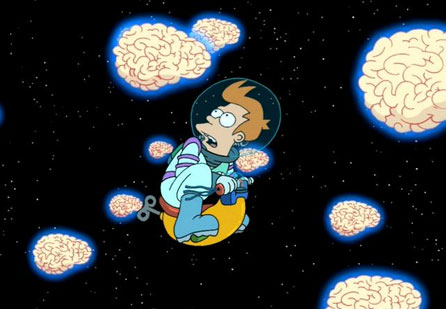there's hope for a few Blitzers yet..
Largely left to their own devices, human stem cells knitted themselves into tissue with a multitude of brain structures and specialized cadres of neurons in a form reminiscent of the brain of a nine-week-old fetus, scientists report August 28 in Nature.
The tissue doesn‘t approach the dizzying complexity of the human brain. Yet these tiny neural balls, each no bigger than a BB pellet, represent the most complex brain structure grown in a lab to date, researchers say. The new work could provide an unprecedented window into the early stages of human brain development, a simple way to test pharmaceuticals on human brain tissue and a way to study the brain defects of individual patients, the study authors suggest.
“They‘ve done something very remarkable,†says Flora Vaccarino of Yale University.
After about two months of growing in a nutrient broth, the cells specialized into neurons that populated distinct, recognizable parts of the developing brain, such as the hippocampus, retina and choroid plexus, which produces cerebrospinal fluid in the brain.
The tissue clumps also had discrete parts of the cerebral cortex, the outer sheet of the human brain that‘s responsible for advanced thought processes. Other properties of the human brain held true, too: Many of the neurons were actively firing off electrical messages, experiments revealed. Select groups of young neurons seemed to have migrated to a different part of the organoid, a process that helps populate the brain with neurons. And like the brain, the tissue had a rich population of a specialized stem cell called radial glial stem cells. These cells kept neuron numbers growing.
Called “cerebral organoids†by study coauthors Madeline Lancaster and Jürgen Knoblich of the Austrian Academy of Science in Vienna, the tiny lab-grown tissues could have big implications for brain science. Already, by growing a personalized organoid with cells from a patient, the researchers have learned about microcephaly, a developmental disorder marked by a small brain.
“There is enormous potential there,†says neuroscientist Ed Lein of the Allen Institute for Brain Science in Seattle.
The organoid-growing process begins with human stem cells, taken either directly from an embryo or from adult skin samples that have been reprogrammed to an embryo-like state. These cells can grow into any tissue in the human body. To make them into a cerebral organoid, the researchers let the cells grow for a few days in a dish, and then moved them into a broth that encourages the growth of neuroectoderm tissue, the kind that ultimately creates the brain. After that, the researchers injected these cells into a drop of gel that serves as a scaffold for the cells to grow on. In the final move, the gel droplets were transferred to spinning flasks that held nutrients.
This last step was crucial, the researchers found: The spinning motion distributed oxygen and nutrients to all of the cells in the organoid. Without it, cells, especially those in the center, would starve and die.
After about two months, the organoids had pushed past the boundary of their gel droplets, reaching a diameter of about 4 millimeters.
So far, the researchers have grown hundreds of these cerebral organoids and the oldest is about a year old. In the oldest ones, the cells are still alive but have stopped dividing, Lancaster says. The organoids reach maximum size after about two months; any larger and the cells on the interior would not get enough nutrients and oxygen, she says.
One of the most remarkable aspects of the work is that the organoids formed these complex, brainlike structures with little from researchers, Lein says. “The biggest thing for me is realizing that most of the information for generating a brain is intrinsic,†he says. “These cells carry enough information to generate a brain.â€
That means that cells from different people can easily be used to grow very different sorts of brains. As part of their study, Lancaster, Knoblich and colleagues grew a personalized organoid using cells from the skin of a patient with microcephaly. Lancaster says she immediately saw that the organoid was smaller than usual.
Microcephaly has been difficult to study. But with the microcephaly organoid, the researchers figured out why the brains were smaller. Neuron-producing radial glial cells were stopping their job too early and disappearing, the researchers found. This early termination could ultimately result in too few neurons, a situation that might also happen in microcephaly. These organoids could offer insight into more complex disorders rooted in brain development, too, such as schizophrenia and autism, says Knoblich.
Of course, these organoids differ from the brain in many ways. Unlike the brain‘s organized structure, regions in the organoids were arranged haphazardly. The neurons made connections, but probably not meaningful ones like those in the human brain. And important support systems, such as blood vessels, were absent.
“If you look at our organoid as a whole, it is not a brain,†Knoblich says. Nonetheless, the system is a useful approximation.



